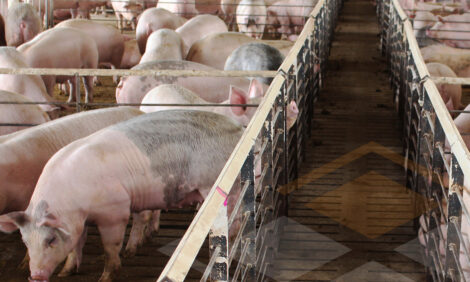



Study: Antimicrobial drug resistance changed little in the past 10 years
By Murray Tong, Ontario Pork Newsletter - As concern mounts about the dangers of antimicrobial drug resistance, on-farm antimicrobial use - which helps fight infection and promote growth in animals such as swine - is a source of worry for the public.|
Pool Plus Program Expanding CAIS Program Deadline Approaching Swine Conference Coming Up Consultation Process Begins Research Corner Wine, Cheese…and Pork! It's Annual Meeting Time! |
Some people fear bacteria from the barnyard will develop resistance to antimicrobial drugs, rendering all similar drugs against them useless, and leaving humans vulnerable.
But the concern for humans need not be too high right now, says former University of Guelph graduate student Nicol Janecko, Department of Population Medicine. She and her colleagues conducted a survey of 100 Ontario swine farms in 2001 and 2002, assessing antimicrobial drug use and testing microbes to identify the patterns of antimicrobial resistance in bacteria such as E. coli.
The good news: resistance to the most important newer drug types used to fight human infection was not found. And the level of multiple resistance has changed little in the past 10 years, since previous studies were conducted.
"For example, no resistance was found to the fluoroquinolone family of antimicrobials, which are used to fight human infections," says Janecko.
She and her research team isolated 283 and 368 E. coli in 2001 and 2002, respectively, from finisher pig fecal samples in farrow-to-finish and grower-finisher operations. They tested each of these isolates against a panel of 16 antimicrobials to look for resistance.
"We wanted to update our list of what's out there in terms of the number of antimicrobial drugs that are used in the swine industry, the stage of production where they're used, and the levels of resistance," says Janecko.
Of these E. coli strains, more than three-quarters showed resistance to one or more of the older antimicrobials tetracycline, streptomycin and sulfamethoxazole. And in both years of the study, around 70 per cent of all isolates were resistant to two or more antimicrobials. Janecko even found incidences where certain bacteria were resistant to as many as seven different antimicrobials, although this was relatively rare.
While not usually pathogenic themselves, she says, these bacteria are a good indication of the degree of antibiotic resistance in the microbe population. And they can exchange resistance genes with pathogens such as Salmonella, which can create new strains of disease-causing bacteria that can't be controlled with antimicrobials.
Many of these cases involved closely related drugs, she says. But once resistance finds its way into a bacteria population, it can spread easily via plasmids (fragments of DNA encoding resistance genes that are transferred from cell to cell). That would leave many antimicrobials powerless to stop infections from disease-causing bacteria - a huge blow to swine welfare, producers' pocketbooks and public health.
Janecko says antimicrobial resistance on the farm is a long way from the consumer. But if bacteria do contaminate pork products, consumers who don't follow good food safety practices -- such as sufficient cooking time, hand-washing and avoiding contact with raw food -- could be infected with disease-causing bacteria that may have acquired drug resistance, causing severe illness.
And because these strains are resistant to some drugs, treatment with a drug from the same class usually won't be effective. That could translate into longer stays in the hospital and other complications.
Janecko believes antimicrobial use can be reduced through better farm management or cleaner practices, which could allay fears about antimicrobial resistance spread to humans.
"I don't believe that there will ever be a complete ban on the use of antimicrobials in food animal production," she says. "They're important for disease prevention and treatment. But if we can implement different management programs such as all-in/all-out systems, or have cleaner facilities, we might be able to decrease the spread of disease in the barn, and then rely less on antimicrobials."
At present, the Canadian Integrated Program for Antimicrobial Resistance Surveillance (CIPARS) has conducted pilot projects to monitor antimicrobial resistance at the retail level and at abattoirs. Janecko hopes that her research will add to the pool of knowledge on antimicrobials, and contribute to the surveillance framework for antimicrobial resistance monitoring on-farm in Ontario and the rest of Canada.
"We're also giving this information back to the pork industry, and hopefully it will have some impact with their food safety programs," she says. "This work could be used to contribute to new policies and programs at both the farm and industry levels."
Other researchers involved in this study include Population Medicine Profs. Robert Friendship, Scott McEwen and Richard Reid-Smith, who is also an epidemiologist at Health Canada's Laboratory for Foodborne Zoonoses.
This research was funded by Ontario Pork, Health Canada and the Ontario Ministry of Agriculture and Food.
For more information, contact Jean Howden, Ontario Pork research coordinator, at 1-877-668-7675 or
[email protected]
Source: Ontario Pork, March 2004
Murray Tong is a writer with SPARK, the University of Guelph's student writing program.







